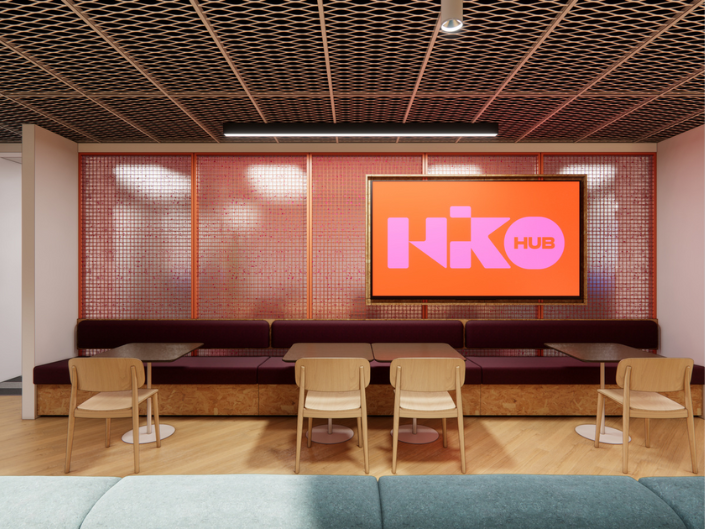Are Coworking Spaces Profitable?
- Details
What You Need to Know Before Starting a Coworking Business
The rise of remote work, freelancing, and hybrid teams has transformed the way people work, and with it, the real estate and workspace industries. Coworking spaces have popped up in nearly every major city and are increasingly common in smaller towns and suburbs too. But before you dive into leasing a warehouse or converting an old office floor into a shared workspace, there’s one key question: Are coworking spaces actually profitable?
Like any business, the answer depends on how it’s set up, who it’s for, and how well it’s run. In this article, we break down the economics of coworking spaces, what it costs to start one, how they make money, the risks involved, and the potential return on investment. Whether you're a landlord looking to repurpose vacant office space or a budding entrepreneur passionate about building community, this guide will help you decide whether coworking is a financially sound venture.

What is a Coworking Space?
Let’s start with the basics. A coworking space is a shared office environment where individuals and businesses can rent desks, private offices, meeting rooms, or flexible workspaces on a short- or long-term basis. Tenants might include freelancers, startups, remote workers, corporate teams, creatives, or small businesses.
What makes coworking spaces appealing is their flexibility, community, and amenities, think fast Wi-Fi, coffee stations, printing services, meeting rooms, events, and sometimes even showers, bike storage, and pet-friendly policies.
Coworking Industry Snapshot: Why the Boom?
Before we dig into the numbers, it helps to understand why the demand for coworking has grown so fast—and why it’s likely to keep rising:
- Remote Work is Here to Stay: Hybrid and remote models have become standard for many businesses post-pandemic.
- Startups and SMEs Prefer Flexibility: Coworking offers a lower-cost, lower-risk alternative to traditional commercial leases.
- Corporate Teams Want Satellite Offices: Large companies are decentralising operations and need spaces outside of CBDs.
- Real Estate Needs Repositioning: Vacant commercial properties are being turned into revenue-generating shared workspaces.
This all creates fertile ground for coworking businesses. But just because the market is growing doesn't mean it’s a guaranteed win.

What Are the Costs of Starting a Coworking Space?
To evaluate profitability, you first need to understand the startup and ongoing costs.
Initial Setup Costs:
- Fit-out & Design: $300–$1,200+ per square metre (depending on style, furniture, tech, soundproofing, etc.)
- Lease or Property Purchase: Depends on your market and square footage.
- Technology Infrastructure: Wi-Fi, access control, booking systems, CCTV, printers.
- Branding & Marketing: Website, signage, SEO, social media, and local outreach.
- Legal & Insurance: Business registration, liability insurance, lease agreements.
Ongoing Monthly Costs:
- Rent or mortgage
- Utilities (power, internet, cleaning, waste)
- Staff wages (community manager, cleaner, tech support)
- Software subscriptions
- Maintenance and consumables (coffee, toilet paper, printer paper)
- Marketing and event hosting
Depending on size and location, it can cost anywhere from $100,000 to $500,000+ to launch a coworking space.

Revenue Streams in Coworking
A profitable coworking space needs multiple income streams. Here’s how most operators bring in money:
1. Desk Rentals
- Hot Desks: Casual use, day passes or month-to-month.
- Dedicated Desks: A fixed desk rented to a specific person.
- Private Offices: Higher monthly rates, great for stable income.
2. Meeting Room Bookings
Charged hourly or daily, often booked by external clients too.
3. Event Space Hire
Available after hours or on weekends for workshops, meetups, or corporate events.
4. Virtual Office Services
Mail handling, business address registration, and phone answering are great for solopreneurs.
5. Add-On Services
Lockers, printing credits, premium coffee, parking, podcast studios, etc.
6. Partnerships or Sponsorships
Brand partnerships, tech company sponsorships, or even local council support.
Diversifying revenue streams improves resilience and helps operators weather slower months.

Coworking Space Profit Margins
While profit margins vary greatly by location and scale, here are some general benchmarks:
- Break-even timeline: 12–24 months
- Net profit margins: 10%–30% (once stabilised)
- Occupancy rates: Target at least 70%+ for profitability
Smaller spaces might generate modest returns, but scale (or multi-site expansion) can lead to stronger long-term gains. For instance, a coworking space with 50 desks at an average of $500/month brings in $25,000/month before expenses.
Common Challenges to Profitability
It’s not all smooth sailing. Here are some of the most common hurdles to building a profitable coworking space:
1. Low Occupancy
High vacancy rates can crush margins quickly. Solid pre-launch marketing and community building are crucial.
2. High Setup Costs
Over-investing in fit-out and amenities without a clear audience can delay profitability.
3. Poor Location
If you’re too far from public transport, cafes, or a business hub, it’s harder to attract and retain members.
4. Lack of Differentiation
Generic coworking spaces struggle. You need a strong brand and offering (e.g. creative studios, wellness space, women-only, industry-focused).
5. Community Burnout
If the space doesn’t foster genuine connection and productivity, retention drops.

What Makes a Coworking Space Profitable?
The most successful coworking spaces usually have these things in common:
1. Niche Focus
Targeting a specific group, like tech startups, freelancers, health professionals, or creatives, helps tailor the experience and drive word-of-mouth.
2. Strong Community
People join for the Wi-Fi but stay for the connections. Great operators invest in events, member introductions, and culture.
3. Efficient Space Planning
More desks = more revenue, but overcrowding kills the vibe. Smart layout design balances comfort with capacity.
4. Lean Operations
Automating bookings, access, and billing helps keep staffing costs low.
5. Excellent Location
Accessible, safe, and surrounded by cafes or green space, people want to work where they enjoy being.
Tips to Boost Profitability
- Pre-sell memberships before you open
- Offer tiered membership options
- Use referral and loyalty programs
- Run events to attract new users and retain current ones
- Leverage local listings and SEO to boost discoverability
- Partner with nearby businesses for member perks

So, Are Coworking Spaces Profitable?
Yes, but only with the right planning and execution.
Coworking spaces are not a “set and forget” business model. They’re dynamic, people-driven environments that require community management, strong branding, efficient operations, and consistent marketing. But when done well, they can generate stable income, foster meaningful communities, and offer solid long-term returns.
If you're exploring coworking as a business opportunity, start by defining your niche, assessing demand in your area, and building a brand that stands for more than just desk space. The future of work is flexible, there’s plenty of opportunity, but profitability depends on how well you meet the needs of today’s professionals.




